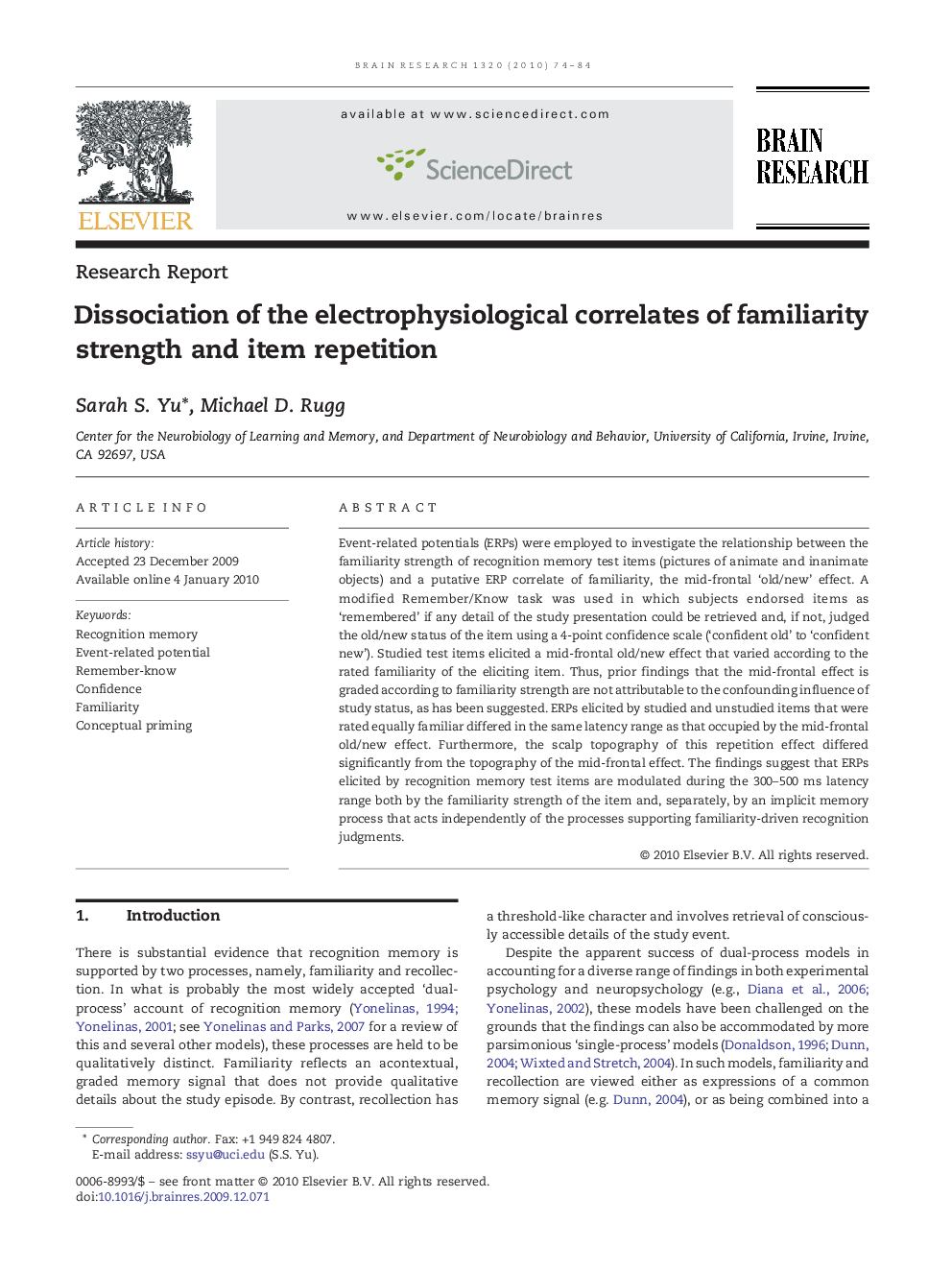| Article ID | Journal | Published Year | Pages | File Type |
|---|---|---|---|---|
| 4327148 | Brain Research | 2010 | 11 Pages |
Event-related potentials (ERPs) were employed to investigate the relationship between the familiarity strength of recognition memory test items (pictures of animate and inanimate objects) and a putative ERP correlate of familiarity, the mid-frontal ‘old/new’ effect. A modified Remember/Know task was used in which subjects endorsed items as ‘remembered’ if any detail of the study presentation could be retrieved and, if not, judged the old/new status of the item using a 4-point confidence scale (‘confident old’ to ‘confident new’). Studied test items elicited a mid-frontal old/new effect that varied according to the rated familiarity of the eliciting item. Thus, prior findings that the mid-frontal effect is graded according to familiarity strength are not attributable to the confounding influence of study status, as has been suggested. ERPs elicited by studied and unstudied items that were rated equally familiar differed in the same latency range as that occupied by the mid-frontal old/new effect. Furthermore, the scalp topography of this repetition effect differed significantly from the topography of the mid-frontal effect. The findings suggest that ERPs elicited by recognition memory test items are modulated during the 300–500 ms latency range both by the familiarity strength of the item and, separately, by an implicit memory process that acts independently of the processes supporting familiarity-driven recognition judgments.
